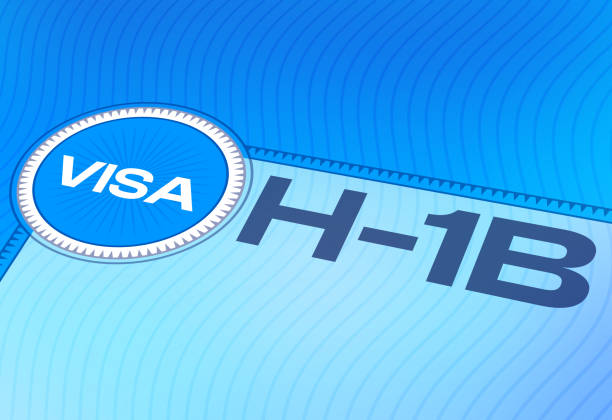Are you dreaming of working in the United States but don’t know where to begin? In 2025, visa sponsorship remains a reliable route for skilled professionals from around the world to legally live and work in the U.S.
This guide will walk you through everything you need to know about U.S. visa sponsorship opportunities, from visa types to companies hiring, salary expectations, and how to improve your chances of success.
What is U.S. Visa Sponsorship?
Visa sponsorship is when a U.S.-based employer offers a foreign national a job and agrees to file the necessary paperwork to allow them to legally work in the country. This includes submitting visa petitions to U.S. Citizenship and Immigration Services (USCIS) and sometimes proving there are no qualified American workers for the position.
Key Elements of Employment-Based Visa Sponsorship
To successfully obtain a work visa through sponsorship, the following elements are usually required:
-
A valid job offer from a U.S. employer.
-
Proof that the employer is eligible to sponsor foreign workers.
-
Filing of a visa petition (e.g., Form I-129 for temporary workers or Form I-140 for permanent residency).
-
Labor certification (for certain green cards) showing there are no U.S. workers available for the role.
-
Compliance with Department of Labor regulations.
Common Employment-Based Sponsorship Visas
Several visa categories allow foreign nationals to work in the U.S. through employer sponsorship:
-
H-1B – For specialty occupations (e.g., IT, engineering, finance).
-
L-1 – For intra-company transfers.
-
O-1 – For individuals with extraordinary ability or achievement.
-
TN – For Canadian and Mexican professionals (under USMCA).
-
EB-2 & EB-3 – Employment-based immigrant visas (green cards) for skilled and professional workers.
Common Visa Categories That Require Sponsorship
If you’re looking for sponsorship, these are the visa types that typically require an employer:
-
H-1B (specialty occupation)
-
H-2A and H-2B (seasonal agricultural and non-agricultural workers)
-
L-1A and L-1B (intra-company transfers)
-
O-1 (extraordinary ability)
-
EB-1, EB-2, EB-3 (employment-based green cards)
Top U.S. Companies Offering Visa Sponsorship in 2025
Many top-tier American companies actively sponsor foreign workers. Some of the biggest sponsors in 2025 include:
-
Amazon
-
Google
-
Microsoft
-
Meta (Facebook)
-
Apple
-
Deloitte
-
Capgemini
-
Tesla
-
Intel
-
JP Morgan Chase
You can check which companies have sponsored visas before by using websites like H1BGrader.com and MyVisaJobs.com.
Types of U.S. Visas That Require Sponsorship in 2025
Temporary (Non-Immigrant Visas)
-
H-1B: For professionals in specialized fields.
-
H-2A: For seasonal agricultural workers.
-
H-2B: For temporary non-agricultural workers.
-
L-1: For employees transferring within the same company.
-
O-1: For individuals with exceptional skills in arts, sciences, or business.
Permanent (Immigrant Visas – Green Cards)
-
EB-1: Priority workers, including outstanding professors, researchers, and executives.
-
EB-2: Professionals with advanced degrees.
-
EB-3: Skilled workers and professionals with a bachelor’s degree.
Industries That Commonly Offer Visa Sponsorship in 2025
Some U.S. industries are more likely to offer sponsorships, especially due to skill shortages:
-
Technology: Software development, cybersecurity, data analysis.
-
Healthcare: Nurses, therapists, medical technologists.
-
Finance: Accountants, auditors, investment analysts.
-
Engineering: Mechanical, civil, electrical engineers.
-
Education: STEM teachers, university lecturers.
-
Agriculture & Hospitality: Seasonal labor under H-2A and H-2B programs.
Salary Scale for Immigrants Working in the USA
While salaries vary depending on job type and location, here’s a general idea of what foreign workers can expect:
-
Software Developers: $85,000 – $140,000 per year
-
Registered Nurses: $60,000 – $90,000 per year
-
Accountants and Auditors: $70,000 – $100,000 per year
-
H-2B Seasonal Workers: $30,000 – $45,000 per year
Cities like San Francisco, New York, and Seattle tend to offer the highest salaries but also have a higher cost of living.
How to Find U.S. Employers Willing to Sponsor Visas in 2025
Here are the best ways to find sponsorship opportunities:
-
Search visa-sponsoring jobs on LinkedIn Jobs, Indeed, and Glassdoor.
-
Use databases like H1BGrader and MyVisaJobs to find historical sponsors.
-
Attend virtual career fairs focused on international hiring.
-
Look out for specific job descriptions that say “willing to sponsor visa” or “H-1B sponsorship available.”
Challenges Immigrants Face During the Visa Sponsorship Process
While it’s possible to get sponsored, it’s not without obstacles. Common challenges include:
-
The H-1B lottery system (which limits how many applicants are accepted).
-
Visa processing delays or rejections.
-
Employer limitations or unwillingness to deal with immigration processes.
-
High legal and application fees.
-
Uncertainty due to immigration policy changes.
Tips for a Successful Visa Sponsorship Journey in 2025
To improve your chances of securing sponsorship:
-
Customize your resume for U.S. standards and job roles.
-
Be honest and clear in your application.
-
Apply early, especially for H-1B roles (lottery season begins in March/April).
-
Network with professionals and recruiters via LinkedIn.
-
Hire an immigration lawyer for support in complex cases.
-
Keep an eye on U.S. immigration news and policy updates.
Conclusion
U.S. visa sponsorship remains a practical and achievable way for talented individuals around the world to live and work in the United States. From tech and healthcare to seasonal work, there are opportunities for almost every skill level in 2025. With the right information, preparation, and persistence, your dream of building a career in the U.S. can become a reality.
